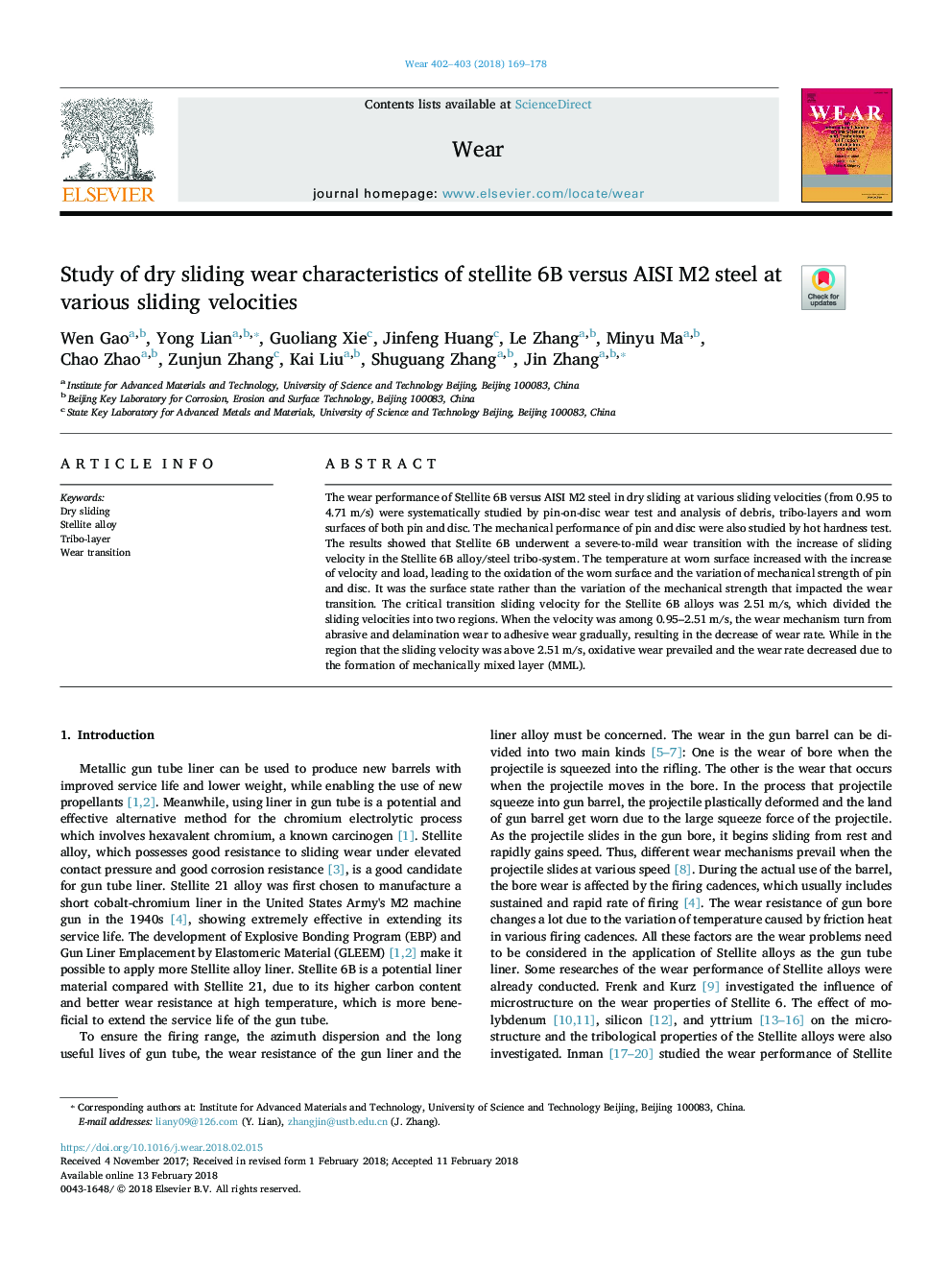| Article ID | Journal | Published Year | Pages | File Type |
|---|---|---|---|---|
| 7003935 | Wear | 2018 | 10 Pages |
Abstract
The wear performance of Stellite 6B versus AISI M2 steel in dry sliding at various sliding velocities (from 0.95 to 4.71â¯m/s) were systematically studied by pin-on-disc wear test and analysis of debris, tribo-layers and worn surfaces of both pin and disc. The mechanical performance of pin and disc were also studied by hot hardness test. The results showed that Stellite 6B underwent a severe-to-mild wear transition with the increase of sliding velocity in the Stellite 6B alloy/steel tribo-system. The temperature at worn surface increased with the increase of velocity and load, leading to the oxidation of the worn surface and the variation of mechanical strength of pin and disc. It was the surface state rather than the variation of the mechanical strength that impacted the wear transition. The critical transition sliding velocity for the Stellite 6B alloys was 2.51â¯m/s, which divided the sliding velocities into two regions. When the velocity was among 0.95-2.51â¯m/s, the wear mechanism turn from abrasive and delamination wear to adhesive wear gradually, resulting in the decrease of wear rate. While in the region that the sliding velocity was above 2.51â¯m/s, oxidative wear prevailed and the wear rate decreased due to the formation of mechanically mixed layer (MML).
Related Topics
Physical Sciences and Engineering
Chemical Engineering
Colloid and Surface Chemistry
Authors
Wen Gao, Yong Lian, Guoliang Xie, Jinfeng Huang, Le Zhang, Minyu Ma, Chao Zhao, Zunjun Zhang, Kai Liu, Shuguang Zhang, Jin Zhang,
